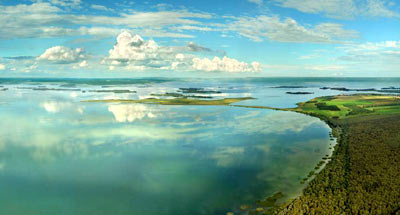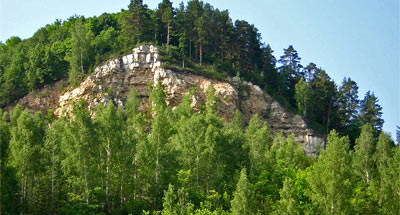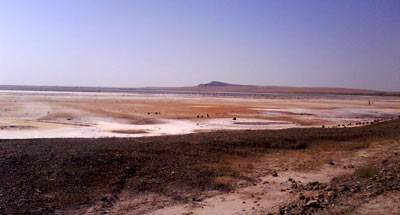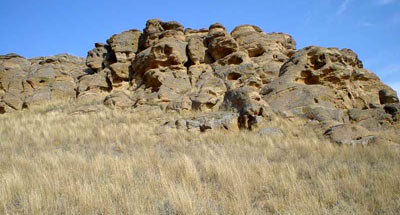Please put an active hyperlink to our site (www.rusnature.info) when you copy the materials from this page
Russian Zapovedniks and National Parks
<<< National Park "Chavash Varmane"
| Index and Map | Zapovednik
"Astrakhansky" >>>
Povolzhye
The list of the Povolzhye Region Zapovedniks (Nature
Reserves) and National Parks:
This fairly small but densely populated region comprises oblasts
(regions) and republics situated along the lower reaches of the Volga River (Ulyanovsk,
Samara, Saratov, Volgograd, Astrakhan region, Chuvashia, Tataria and Kalmykia). Since in
Soviet times, numerous big hydroelectric power stations were constructed on the Volga, the
great Russian river has been regulated, containing a continuous system of reservoirs from
Cheboksary to Volgograd. The water in them is well heated. In addition, the water is
polluted by the effluents of industrial enterprises, and therefore the fish often perish
there.

Only the lowest reaches of the Volga where the river is separated into numerous
channels that have retained their original outlook. The Volga Delta, which stretches from
north-east to south-west almost 200 km, is characterized by an exceptionally rich wildlife
Ч there breed hundreds of thousand of waterfowl and waterbirds, including numerous
species of pelicans, herons, cormorants, spoonbills, gulls, and bald coots. On the flyway,
one can see almost all the species of swans, geese and ducks breeding in the European
Russia.

The fish fauna is no less rich, comprising over 60 species, Cyprinidae being the most
numerous, including the common carp, carp bream, occur in the lower reaches of the Volga
River. The most valuable are Acipenseridae, which each year migrate from the Caspian Sea
to the Volga spawning grounds.
After the huge hydroelectric power stations were constructed, the water level in the
lower reaches of the Volga River varies to affect the entire life of the local dwellers.

Ecologists are particularly concerned about the development of the Astrakhan gas
processing project.
The northern part of the Region lies on the junction of mixed forests and
forest-steppes, hence, the landscapes there are highly variable and picturesque.
Particularly well known are the ancient pine forests situated on the southern edge of
their distribution range (e.g., the Raifskii Forest in the "Volzhsko-Kamsky"
Reserve" near Kazan and the plots of pine forests in Zhiguli),
and also the famous Privolzhye oak forests glorified in myths and tales. In combination
with the oak tree and other deciduous forests, the pine forms some very complex
plantations which have been retained in a fairly original forth, only in some individual
protected areas.

As the entire forest-steppe zone Povolzhye has been exposed, to intensive economic
development, and the entire nature of the region has been disturbed. However, there occur
such common forest species as the moose, wild boar, roe deer, marten, lynx, and the
squirrel. In not so distant past, the famous Zhiguli Mountains were home to bears, which
became extinct in the middle of the 19-th century. Some present dwellers of Povolzhye were
acclimatized there in the 1930s (the axis deer, raccoon dog, American mink).

Farther to the south, the forest steppe is primarily replaced by the steppe and
subsequently, by semi-desert landscapes. It is exactly semideserts that encompass the
lower reaches of the Volga River, and take up a considerable portion of the Cis-Caspian
Lowland within Kalmykia. The numerous natural features there are associated with variation
of the Caspian See Level Ч this ancient salt lake, which is characterized by variability
and fluctuation of the volume. Some areas, e.g., Elton and Baskunchak lakes lie below the
sea level, although near them the steppe mountain Bogdo is located, which rises almost to
200 m.

Characteristic are the wormwood steppes and solonchaks, where grow some specific plants
adapted to local conditions (tamarisk, black wormwood, biurgun saltwort, various grasses
and even lichens).
The great space which has been constantly increasing during the recent years, is taken
up by sands, whose intensive development is also associated with modification by man,
namely, by overgrazing of sheep. These landscapes are characterized by a very peculiar
fauna Ч the steppe corsac fox, various sousliks, hamsters, gerbils. Of particular
interest is the saiga Ч steppe antelope, the dweller of the semideserts of Kalmykia and
the Astrakhan Region. It was almost extinct at the beginning of our century, but its
numbers were not only restored, but in the 1960s-1970s it was harvested on a massif scale.
However, due to overharvest and construction of numerous irrigation canals, the saigas are
again hard up, and special measures are called for to save them.

The semidesert zone is characterized by a large number of various water bodies Ч from
large lakes and reservoirs to small ponds. They all attract numerous birds and other
members of the local fauna. Hence, the wildlife of the semidesert Povolzhye is fairly rich
and diverse and needs to be strictly protected.
The list of the Povolzhye Region Zapovedniks (Nature
Reserves) and National Parks:
<<< National Park "Chavash Varmane"
| Index and Map | Zapovednik
"Astrakhansky" >>>
|